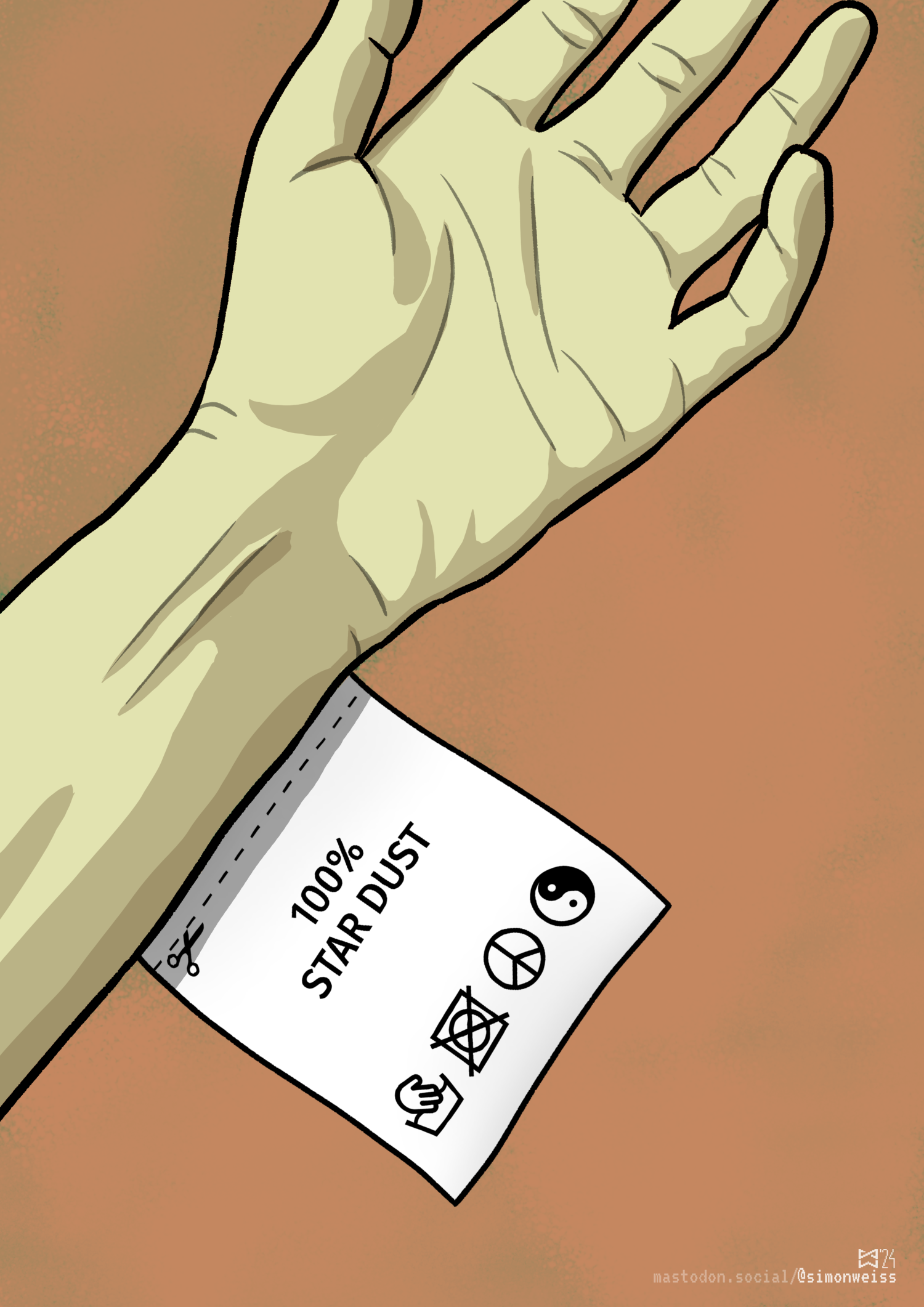Simon Weiss
Artist, designer, coder, FOSS enjoyer.
Mostly memes here. Check out Mastodon for art and stuff.
- 3 Posts
- 22 Comments
I know that habit of using messenger app for notes :) Try [matrix] using Element or SchildiChat. It’s e2eencrypted and federated, and even supports markdown formatting in messages. Also some Slack features are included. The only issue for non-techy person might be verifying sessions - just be sure to use the same client on all devices.

 3·3 months ago
3·3 months agoCheck out “Keys to Drawing” book by Bert Dodson. It gives a good versatile introduction without unnecessary ‘academic drawing’ pressure.
TL;DR Check out natural incense from different countries/traditions. Don’t burn cheap stuff, it’ll give you a headache and potential health issues.
There is a plethora of incense beyond cheap rolled sticks that we see everywhere. I’d say, go for the most natural stuff you can find. For that you will most likely need a store that specializes in incenses to some extent. Good incenses may not be cheap, but in the long run your lungs and smell receptors will be grateful to you :)
There are some classic base materials that are incenses themselves, but also are widely used as a base component in complex aromas. These include frankincense (of many varieties), myrrh, agarwood, juniper or sandalwood powder and many more. Most of them have pleasant pure scent. Try burning a small amount on a charcoal and you’ll be able to sense them in mixed incenses after that. In Latin America they have copal (which is similar to frankincense) and palo santo wood on this team.
As for Indian rolled sticks: only buy those covered with powder, it will guarantee at least some quality, otherwise it would be just a charcoal core soaked in synthetic aroma oils. AFAIR “HEM” is always bad. “Satya” is a safe bet among popular brands, although as someone already mentioned all their products smell kinda the same at first sight. There are still places in India where they make sticks from natural powders and essential oils, of course more pricy and less easy to come by, but their aromas are truly rich and diverse. Most of Indian aromas are strong, sweet and intoxicating.
Another popular type of incense is made in form of solid sticks from powdered aromatic wood, ground medicinal herbs and other solid ingredients with little to no use of essential oils. Mainly originated from Tibet, they are now produced in Nepal and Bhutan. They have smoky, earthy and herbal aromas. Most of them have relaxing or concentrating effect thanks to herbs. They’re easy to come by online or in Buddhist-related places.
There are Japanese incense, Nippon Kodo for example, which in my experience mostly smell like highly refined Indian aromas, but they also have some bizarre scents like “Pais Cafe” (cinnamon, bread and coffee) or Aqua (basically an amplified watermelon smell). A distinctive feature of Japanese incense is that giving rich aroma they produce as little smoke as possible. Needless to say they’re the most expensive of all.
This is what comes to mind first. The list is far from complete, feel free to ask questions if you decide to dive down the rabbit hole :D

 2·5 months ago
2·5 months agoYeah, actually it also has a HTTP server, in case you need to transfer something big one way and don’t want to bother with FTP connection

 4·5 months ago
4·5 months agoIf by wirelessly you mean via Wi-Fi network then one convenient option is qrcp. It generates a QR-code right in your terminal, which you can scan with a phone and send/receive files through a web interface on the URL it provides.
If you want to transfer files regularly, there is another option. Almost every distro has Python installed, and the Python has a “built-in” FTP server. You need to just
cdinto desired directory and run the commandpython -m pyftpdlib -w. It will open a FTP server with root in this directory. You then can access it through a file manager, like Material Files for example, and send files and folders back and forth. In Material Files you can save the server address for future use.

 5·5 months ago
5·5 months agoIf by wirelessly you mean via Wi-Fi network then one convenient option is qrcp. It generates a QR-code right in your terminal, which you can scan with a phone and send/receive files through a web interface on the URL it provides.
If you want to transfer files regularly, there is another option. Almost every distro has Python installed, and the Python has a “built-in” FTP server. You need to just
cdinto desired directory and run the commandpython -m pyftpdlib -w. It will open a FTP server with root in this directory. You then can access it through a file manager, like Material Files for example, and send files and folders back and forth. In Material Files you can save the server address for future use.
 122·6 months ago
122·6 months agoI’m glad I didn’t sit by and deleted all my posts and comments.

 10·6 months ago
10·6 months agoWow, this one hell of a monster will take a place of honor among my containers :) Thanks for sharing!
The one that was selected you mean? You can see it in their community avatar https://lemmy.world/c/voyagerapp

 1·1 year ago
1·1 year agoI’d recommend making the circle stroke width equal to the head’s stroke width, like in the original icon. Other than that it’s a perfect substitute imo
Nostalgic! Ordered 5 of these at the time and distributed among the good people :)

 11·1 year ago
11·1 year agoSensMe in Sony and Sony-Ericsson phones and players. It was the tool that analyzed your music collection and sorted it according to energy, mood and tempo.
The best variant was on the later products whey you had a list of channels representing either moods/styles (Energetic, Emotional, Lounge, Dance etc.) or time of the day (from ‘Morning’ to ‘Midnight’). The results were very good, especially for the time channels (except the morning) which were perfectly fitting the mood and pace of times of the day, much like Indian ragas. It really felt like your personal radio stations, freeing you from having to make playlists by yourself ever again…
It was discontinued in 2010s because of declared low adoption by users according to some obscure internal studies :( I’ve been dreaming of replicating it using Python ever since, but never had time to do a proper research.
Usually yes, but this time devs explicitly suggested raster format and provided some illustrations in similar style as a reference. Although they ended up selecting vectorish variant anyway so never mind :)
Thanks! It’s really hard to stop adding details when it’s a painting instead of a vector 😄

 4·1 year ago
4·1 year agoWhy on Earth did I read this comment? 🥲 This app is so painfully fast and crisp! And it has Vim and SSH out of the box. And its own plugin marketplace… Now I have no choice but to suffer every time I open VSCode(ium) in hope that development continues and soon I will have the thing to ditch it for and finally get rid of my allergies to Electron.








We used to joke in 2010s: what is Internet Explorer? It’s a program that is used to download a browser.
Nowadays, what is Mozilla Firefox? It’s a repository you fork to make a browser.